Nikhil Chawla
Towards Improving the Trustworthiness of Hardware based Malware Detector using Online Uncertainty Estimation
Mar 21, 2021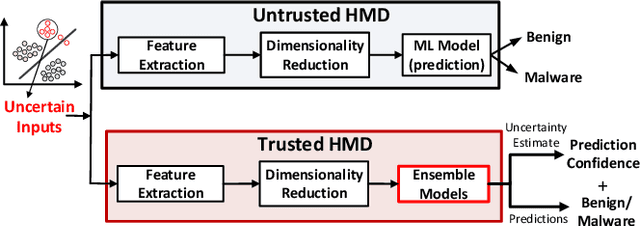
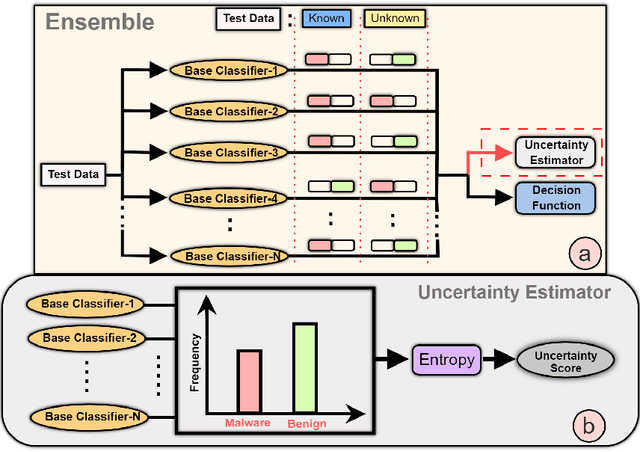
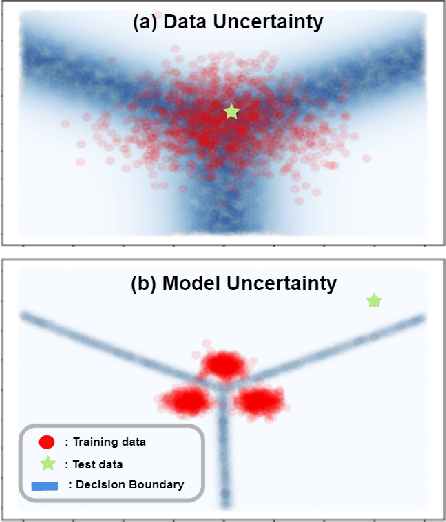

Abstract:Hardware-based Malware Detectors (HMDs) using Machine Learning (ML) models have shown promise in detecting malicious workloads. However, the conventional black-box based machine learning (ML) approach used in these HMDs fail to address the uncertain predictions, including those made on zero-day malware. The ML models used in HMDs are agnostic to the uncertainty that determines whether the model "knows what it knows," severely undermining its trustworthiness. We propose an ensemble-based approach that quantifies uncertainty in predictions made by ML models of an HMD, when it encounters an unknown workload than the ones it was trained on. We test our approach on two different HMDs that have been proposed in the literature. We show that the proposed uncertainty estimator can detect >90% of unknown workloads for the Power-management based HMD, and conclude that the overlapping benign and malware classes undermine the trustworthiness of the Performance Counter-based HMD.
Application Inference using Machine Learning based Side Channel Analysis
Jul 09, 2019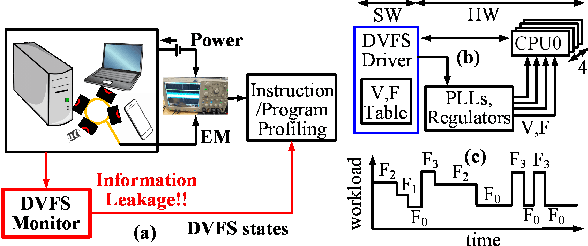


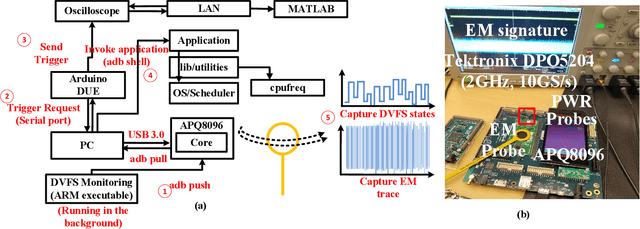
Abstract:The proliferation of ubiquitous computing requires energy-efficient as well as secure operation of modern processors. Side channel attacks are becoming a critical threat to security and privacy of devices embedded in modern computing infrastructures. Unintended information leakage via physical signatures such as power consumption, electromagnetic emission (EM) and execution time have emerged as a key security consideration for SoCs. Also, information published on purpose at user privilege level accessible through software interfaces results in software only attacks. In this paper, we used a supervised learning based approach for inferring applications executing on android platform based on features extracted from EM side-channel emissions and software exposed dynamic voltage frequency scaling(DVFS) states. We highlight the importance of machine learning based approach in utilizing these multi-dimensional features on a complex SoC, against profiling-based approaches. We also show that learning the instantaneous frequency states polled from onboard frequency driver (cpufreq) is adequate to identify a known application and flag potentially malicious unknown application. The experimental results on benchmarking applications running on ARMv8 processor in Snapdragon 820 board demonstrates early detection of these apps, and atleast 85% accuracy in detecting unknown applications. Overall, the highlight is to utilize a low-complexity path to application inference attacks through learning instantaneous frequency states pattern of CPU core.
 Add to Chrome
Add to Chrome Add to Firefox
Add to Firefox Add to Edge
Add to Edge